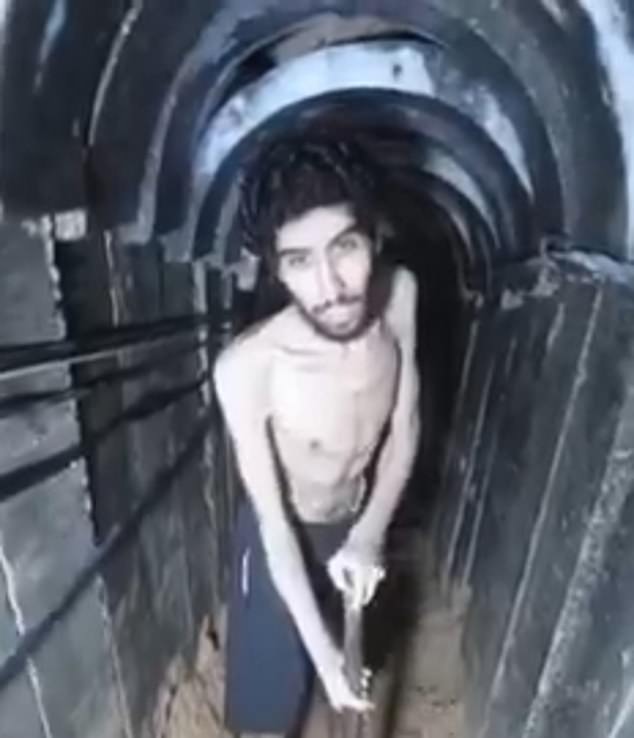For more than two years, 20 hostages held by Hamas endured unimaginable suffering, and only now are their stories coming to light.
Their ordeal began during a brutal incursion into Israel, where Hamas killed around 1,200 people and abducted 251 others.
While most hostages have since returned, these last 20 were only released yesterday, following a landmark Gaza peace deal signed over the weekend.
The surviving hostages have recounted horrifying experiences of isolation, starvation, and psychological torment that marked their long captivity in Hamas-controlled tunnels.
Starvation and Isolation
Many hostages described watching their captors eat while they themselves wasted away.
One of the most extreme cases is Avinatan Or, 32, who was held in near-total isolation for two years.
Avinatan, kidnapped alongside his girlfriend Noa Argamani, 28, at the Nova Festival, lost almost 40% of his body weight and had no contact with the outside world, only learning of Noa’s release on the day he was freed.
Their reunion yesterday was emotional, marked by hugs and kisses after years apart.
Elkana Bohbot, 36, spent most of his captivity chained in a dark tunnel, losing all sense of time. Remarkably, he remembered his wedding anniversary and demanded to shower, a small victory against his captors’ cruelty.
Twins Gali and Ziv Berman, both 28, endured a similar ordeal, separated and uncertain of each other’s fate until they were finally reunited.
Starvation and psychological abuse were constant themes in their captivity, sometimes accompanied by captors speaking to them in Hebrew.
Torture and Psychological Warfare
Matan Angrest, a 22-year-old soldier, faced severe physical and psychological torment after being kidnapped from his tank in southern Israel.
His mother Anat described him being beaten until he lost consciousness, dragged under black sacks, and left alone under constant guard.
Hamas used fear and deception to break him, falsely claiming his Holocaust survivor grandparents were dead and predicting ongoing attacks.
Despite this, Matan retained resilience, and today he is reported to be in a “reasonable” mental state.
Human Shields and Harrowing Conditions
Other hostages faced equally terrifying circumstances. Guy Gilboa-Dalal, 24, recounted being moved between tunnels, force-fed, and separated from his childhood friend Evyatar David.
Alon Ohel, another hostage, was reportedly used as a human shield when Israeli forces announced operations in Gaza.
Evyatar, infamous for a video showing him digging his own grave, maintained hope throughout his two-year ordeal, finding ways to survive mentally despite the extreme conditions.
Omri Miran, 48, was moved between nearly two dozen locations, sometimes cooking for his captors to ensure his survival. Ariel Cunio and Rom Braslavski also endured prolonged isolation, only learning of their relatives’ safety upon release.
A Historic Peace Deal and Release of Hostages
The release of the last 20 hostages coincided with a high-profile peace declaration in the Middle East. US President Donald Trump visited Israel and Egypt to witness the signing of a ceasefire agreement, praising the outcome as “a tremendous day for the world” and a breakthrough in a conflict long considered unsolvable.
The deal brought the hostages home in exchange for Israel releasing 1,968 prisoners, mostly Palestinians, and signaled a tentative step toward rebuilding Gaza.
While the agreement refrained from specifying long-term solutions such as one- or two-state arrangements, leaders emphasized hope for lasting peace.
Egyptian President Abdel Fattah al-Sisi called it a chapter-closing moment for the region’s painful history.
Families Reunited After Years of Waiting
For families across Israel, the past two years have been a nightmare.
The release and reunion of the hostages mark a moment of relief and joy, ending a long chapter of fear, uncertainty, and grief.
Trump addressed the Israeli parliament, underscoring that the deal offered not only hope for Israelis but also for Palestinians, describing it as a chance for “true peace” at last.
Share on Facebook «||» Share on Twitter «||» Share on Reddit «||» Share on LinkedIn